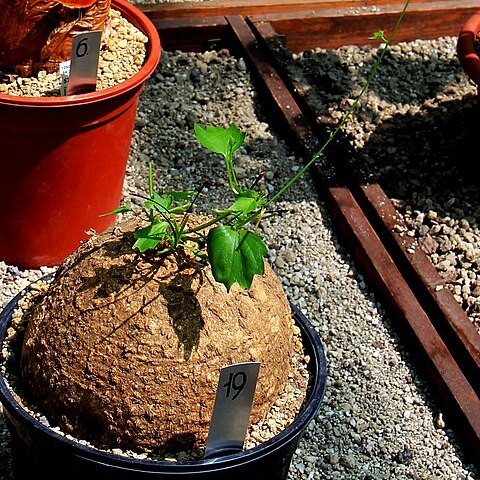Stamens 3, 2 double two-thecous, 1 single one-thecous; filaments free, inserted on receptacle-tube; anthers coherent; connectives narrow, apically pubescent; thecae tightly flexuous; pistillode usually present.
Female flowers solitary; ovary ovate to ellipsoid, smooth; ovules several to many, horizontal; perianth as in male flower; staminodes 3; stigma 3-lobed.
Corolla ± stelliform, the lobes 5, ovate-triangular to lanceolate-attenuate, spreading or reflexed, free almost to the base.
Perennial herbs with slender erect, prostrate or scandent annual stems arising from a tuberous rootstock.
Male flowers in sessile or pedunculate nodal or axillary clusters or racemes, rarely solitary.
Seeds ellipsoid to subglobose, tumid, usually smooth, white; testa hard, thick.
Probracts when present stipuloid, subcircular, ciliate-laciniate, often absent.
Receptacle-tube elongate, cylindrical; lobes minute, remote, dentiform.
Fruit baccate, bright red, terete, indehiscent.
Flowers greenish, dioecious, often precocious.
Leaves simple, petiolate or sessile.
Tendrils simple or absent.
